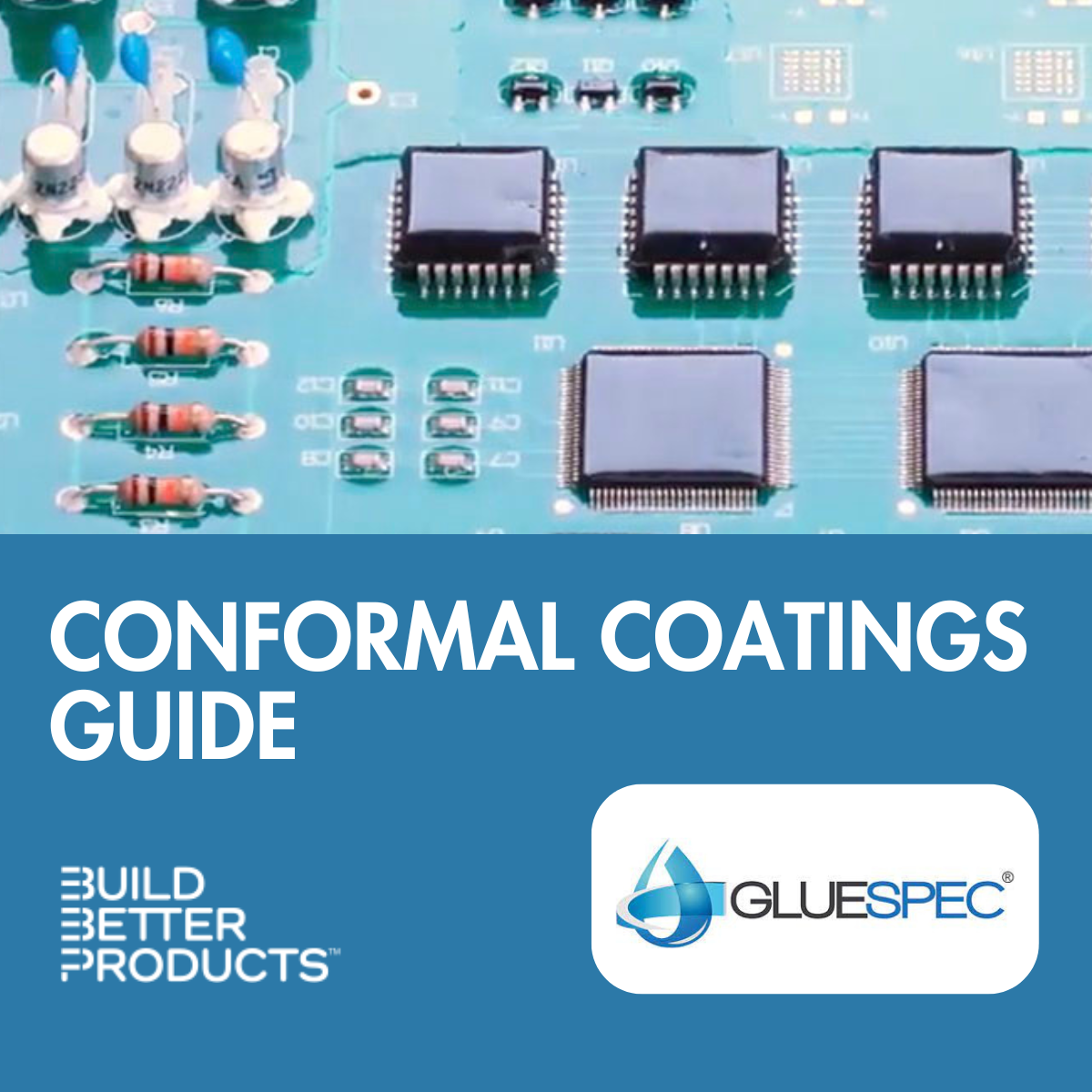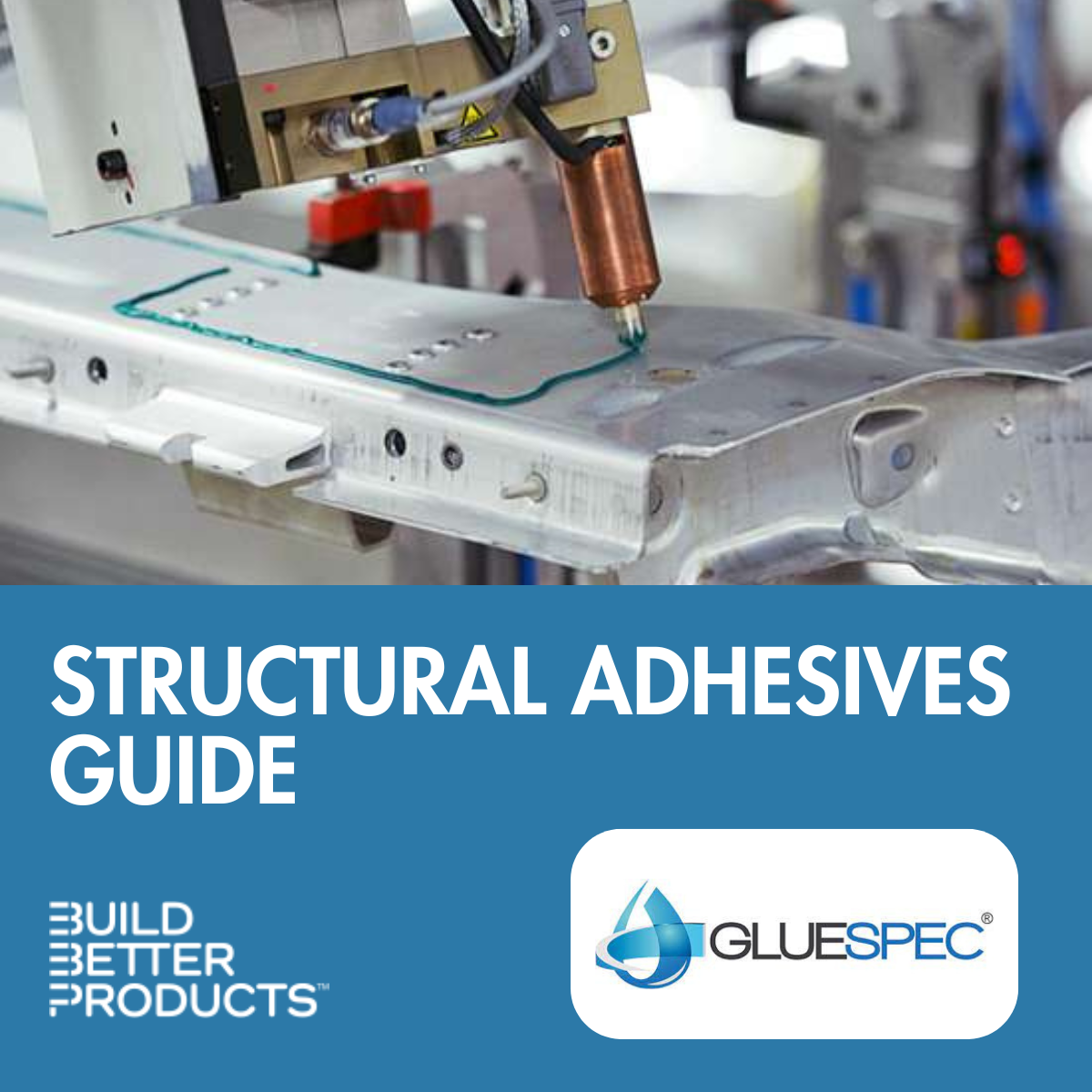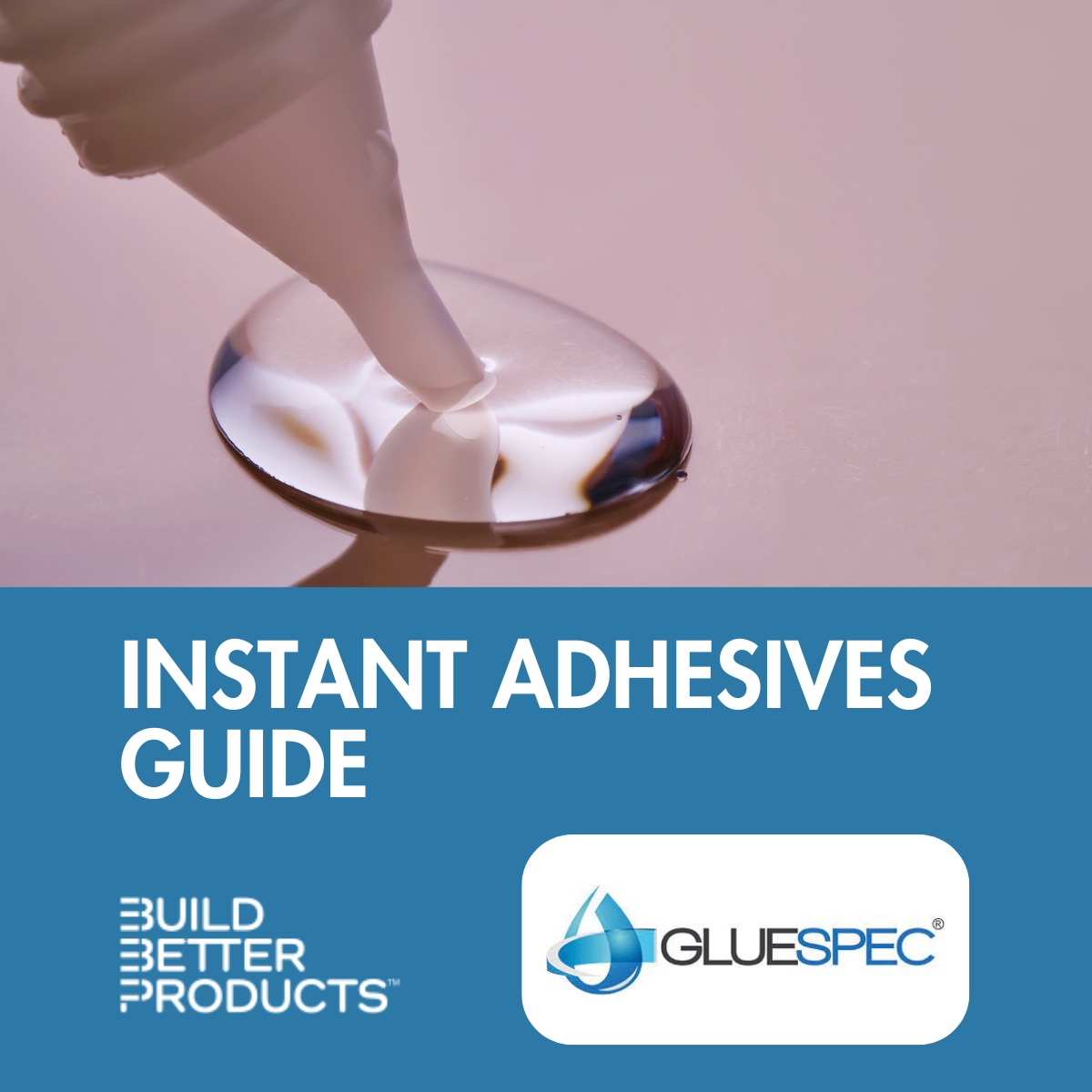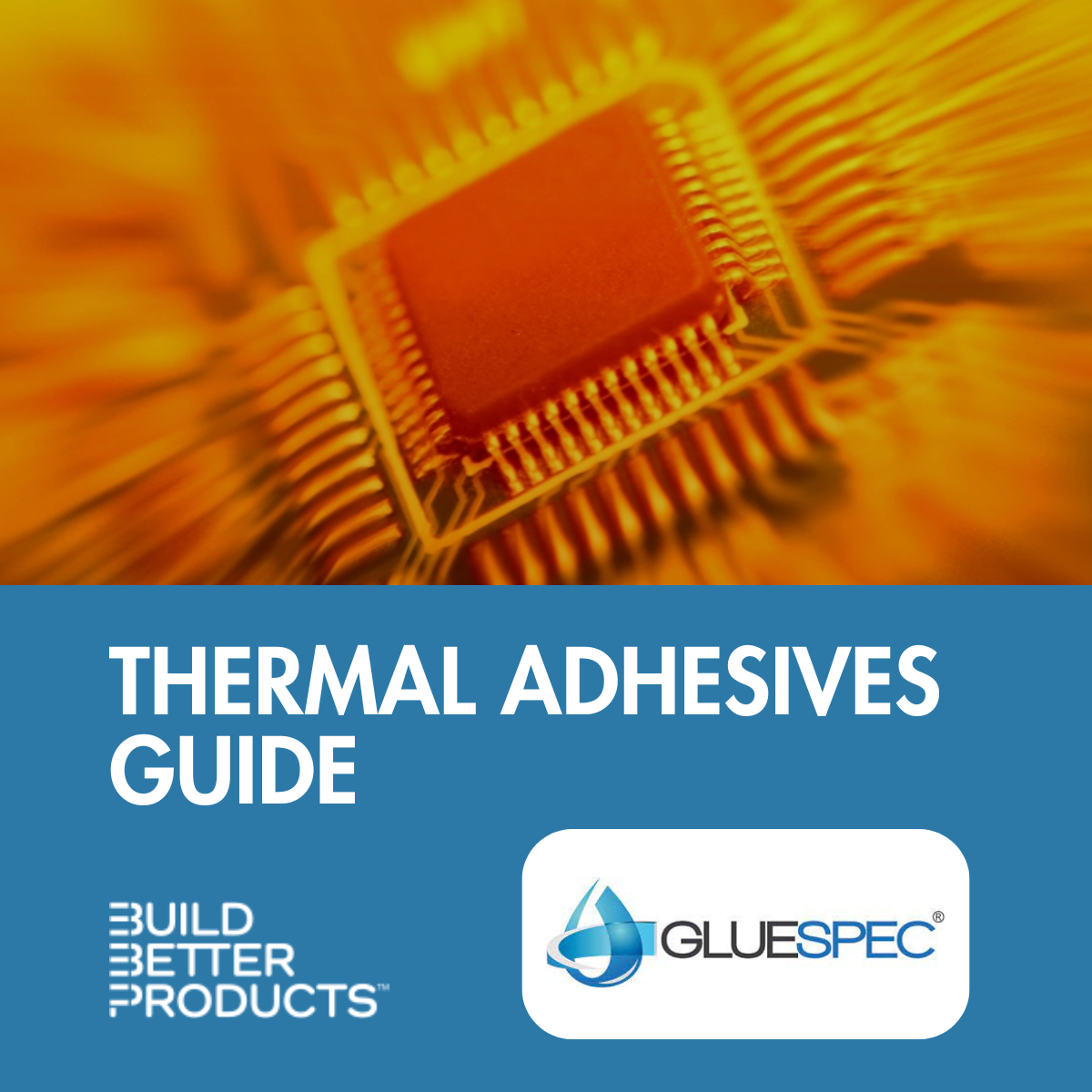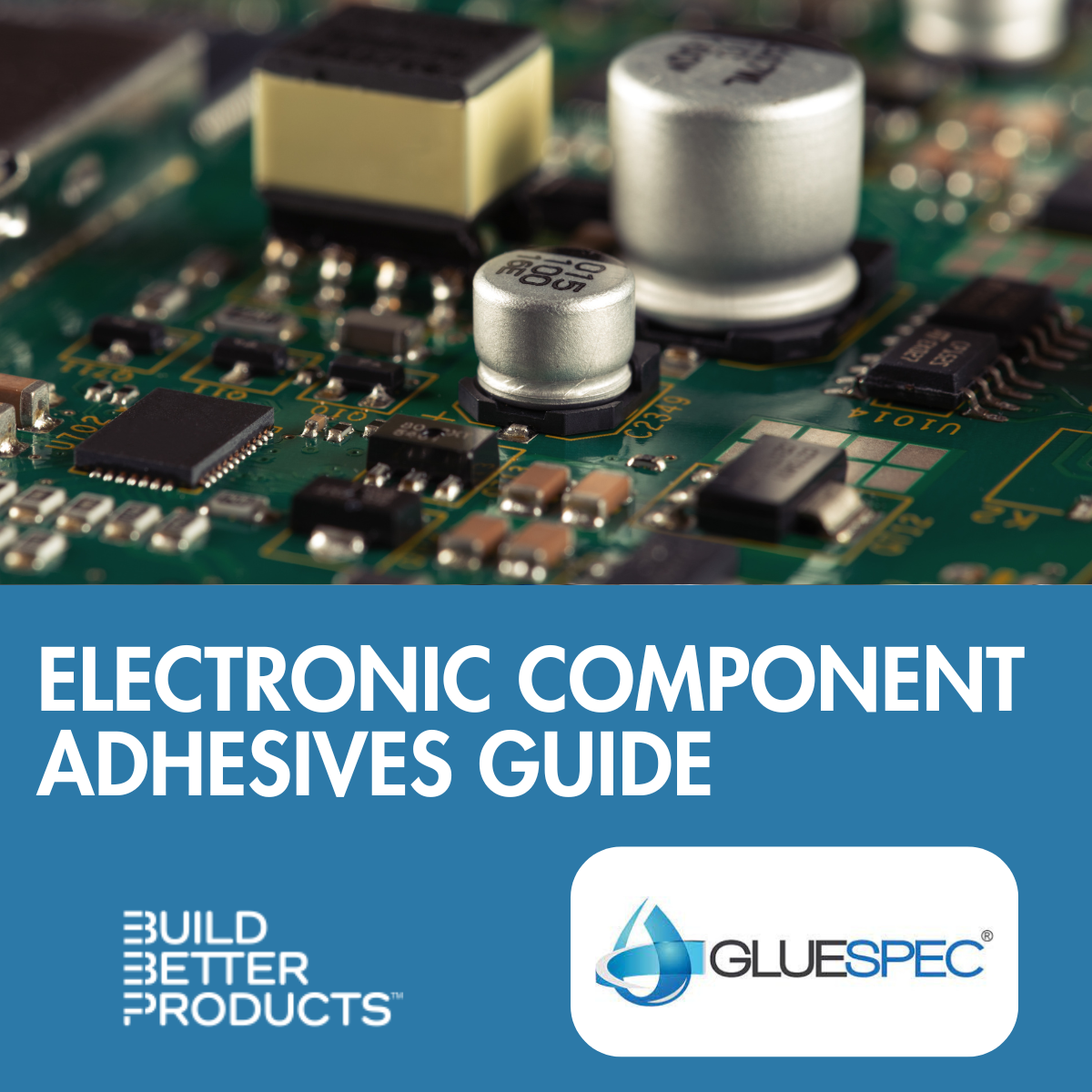

- Contributions by industrial experts with engineers in mind
- Focused on specialty-chemical material applications and selection
Knowledge Center
Potting and Encapsulating Materials Guide
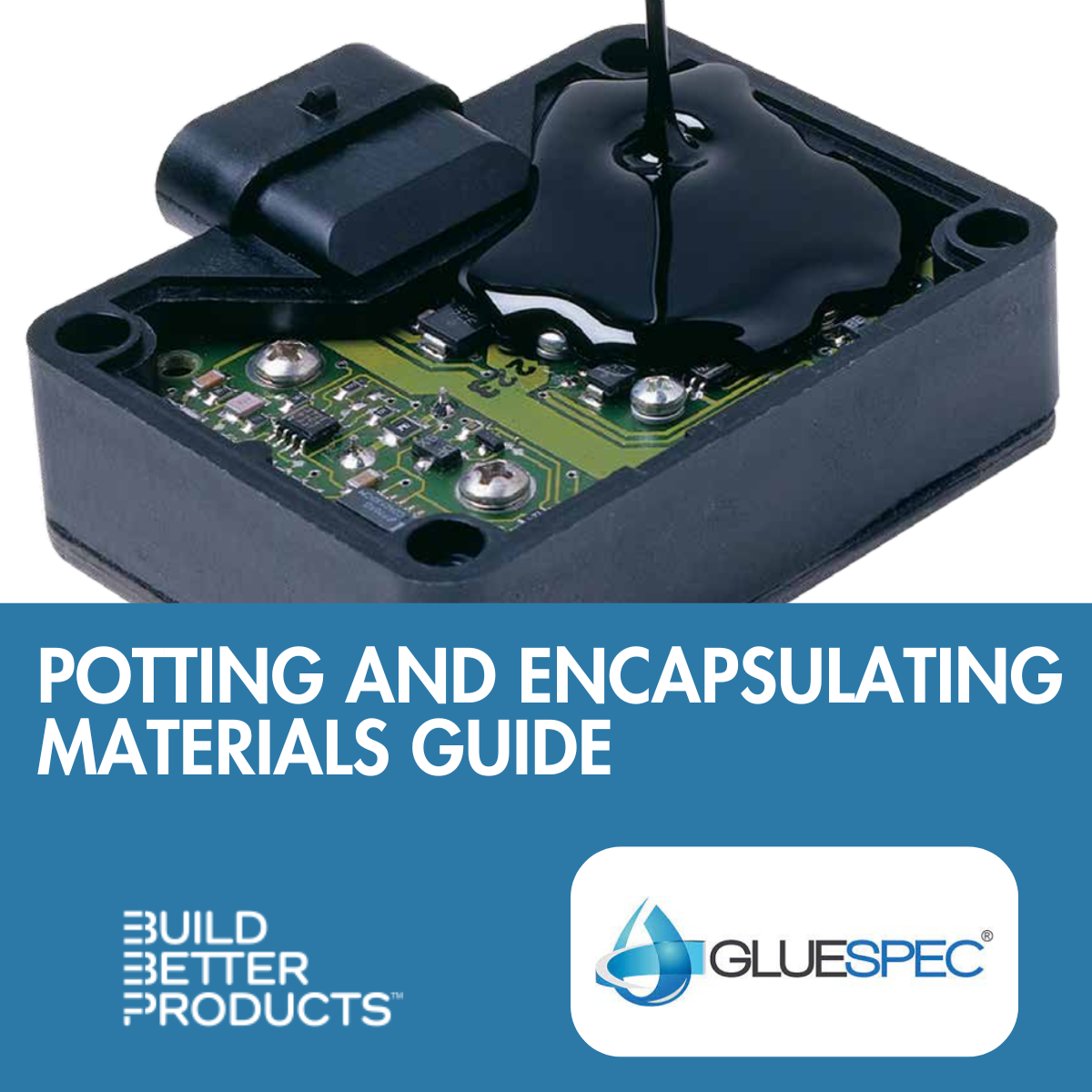
Listen to This Article
Potting and encapsulating materials provide excellent protection against moisture, dust, shock, vibration, heat, electrical discharges, and other hazards that can cause electronics to fail. These protective liquids and gels are poured over printed circuit boards (PCBs) and their components and then cured.
This guide explains what design engineers need to know about selecting potting and encapsulating materials, a category of products you’ll find on Gluespec.
Gluespec’s comprehensive and quality-tested database of 35,000 adhesive materials includes the pottants and encapsulants that design engineers need. Along with technical data and key specifications, you’ll find best practices and comparable materials. You can also view test method information on dozens of material properties and data points..
Table of Contents
- Potting vs. Encapsulating vs. Casting Materials
- Comparisons to Conformal Coatings
- Material Selection Considerations
Types of Potting and Encapsulating Materials
- Casting and Moldmaking Materials
- Dielectric Pottants and Encapsulants
- Epoxy Pottants and Encapsulants
- Micro-Encapsulants
- Polyurethane Pottants and Encapsulants
- Silicone Pottants and Encapsulants
- UV/Visible Light Cure Pottants and Encapsulants
- Masking Materials
- Optically Clear Pottants and Encapsulants
- Gel Pottants and Encapsulants
- Primerless Pottants and Encapsulants
- Shallow Potting
- UL Pottants and Encapsulants
Introduction
There are some important differences between pottants and encapsulants, a category of products that also includes casting materials.
Potting vs. Encapsulating vs. Casting Materials
Potting requires the use of a pot, a plastic case or container with an open top. The PCBA is put in the pot and the potting compound is poured over it until the case is full. The pottant is then cured so that it hardens, and the pot becomes part of the brick-like unit. With encapsulation, the PCBA is dipped into a resin that fully encloses or encases the device. In other words, encapsulation also uses a resin but does not use a pot. Casting, a related process, uses a removable mold instead of a permanent pot. The electronic device is put in the mold, resin is poured over and cured, and the mold is then removed.
Comparisons to Conformal Coatings
Potting and encapsulating materials can be used instead of conformal coatings, thin protective films that are applied to PCB assemblies (PCBAs) and conform to the shape of individual components. Although conformal coatings weigh less and take up less space, they offer less robust protection against chemical, thermal, and environmental hazards. Pottants and encapsulants are thicker, heavier, and enclose the entire PCBA.
Material Selection Considerations
When selecting potting and encapsulating materials, design engineers need to consider the chemistry and the curing system as well as the substrate materials and performance requirements. Epoxy, polyurethane, and silicone are the leading chemistries. Curing systems include moisture, evaporation, heat, ultraviolet (UV) or visible light, and dual curing mechanisms. Pottants and encapsulants are available as one-part or two-part materials, liquids or gels, and as optically clear or opaque materials. Thermally conductive potting compounds include a heat-conductive filler material.
Types of Potting and Encapsulating Materials
Gluespec divides potting and encapsulating materials into various categories and makes it easy to search for them online. Within each category, you can search for products based on technical specifications for curing, bond strength, material resistance, conductivity, and other properties.
The following sections describe each category of potting and encapsulating materials in detail. You’ll also find links to technical resources with additional information, either in the Gluespec Knowledge Center or from other trusted resources.
Casting and Moldmaking Materials
Casting and moldmaking materials are used to fill or create molds into which protective resins are added. Casting materials fill the hollow cavity in the mold, surround the PCBA, and are cured so that the resin hardens. The enclosed device is then removed from the mold, which may be reused. Casting materials are sometimes referred to as pottants, but casting is a different process that uses removable molds instead of permanent pots. Casting is also different from encapsulation because a tool, the mold, is required. Moldmaking materials are related to casting because they used to create the molds.
Applications
Applications for casting and moldmaking materials include:
- Remote controls
- Electronic controllers
- Batteries
Products
These are some of the products you'll find on Gluespec.
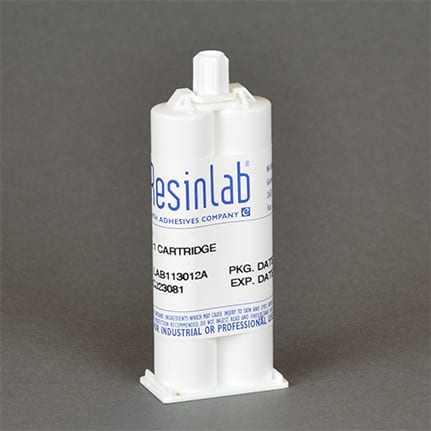 |
EP1200 Black from Resinlab is a two-part, liquid epoxy casting resin with a high thermal conductivity and low coefficient of thermal expansion. |
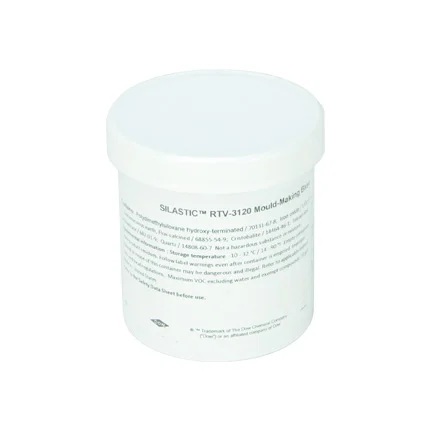 |
3120 RTV Silicone Rubber from Dow is a two-part, liquid silicone mold making material with low tear strength and excellent heat stability. |
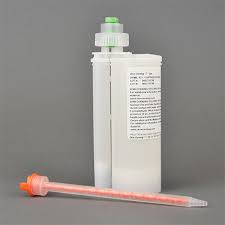 |
EE4183/HD3561 from Henkel is two-part, liquid epoxy casting resin with exceptional resistance to impact and thermal shock. |
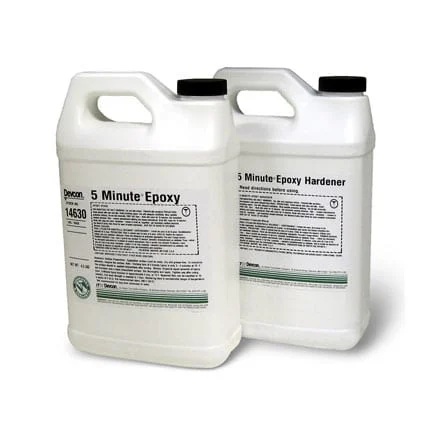 |
Flexane 80 Liquid from Devcon (ITW) is a two-part urethane mold making material that cures at room temperature and has a 10-hour demolding time. |
Tech Specs
Here are some of the technical specifications for casting and moldmaking materials like Resinlab EP 1200 Black.
|
Type |
Spec |
Definition |
|
Cure |
Cure Time (min)
|
The length of time needed for a conformal coating to fully cure, acquiring its end-use properties. |
|
Bond Strength |
Tear Strength (piw) |
The property of a material that is measured by the force required to tear it |
|
Conductivity |
Dielectric Strength (V/mil) |
The electrical strength of an insulating material. |
Resources
Here are some additional resources about casting and moldmaking materials.
- Battery Construction Issues and Specialty Material Solutions
- Casting Process for Electronic Components
- Electronic Potting and Casting
Dielectric Pottants and Encapsulants
Dielectric pottants and encapsulants provide electrical insulation and protect against electrical discharge, the release and transmission of electricity in an applied electric field through a medium such as a gas. Although air is normally an electrical insulator, electricity can pass through it if the distance between components or traces is small and the quantity of a charge is large. The results can include damage to the PCBA or individual components. With the addition of thermally conductive materials, dielectric pottants and encapsulants can conduct heat while providing electrical insulation.
Applications
Applications for dielectric pottants and encapsulants include:
- Motors
- Transformers
- Switchgear
Products
These are some of the products you'll find on Gluespec.
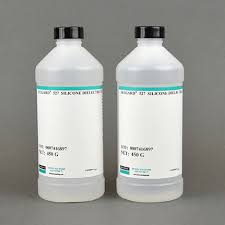 |
Sylgard 527 Silicone Dielectric Gel from Dow is a two-part, low-viscosity product that cures at room temperature. |
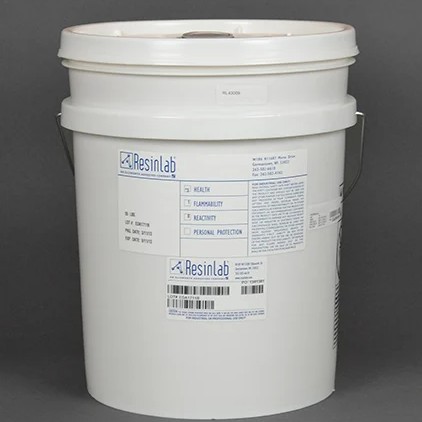 |
UR3010 from Resinlab is two-part polyurethane liquid with very good resistance to water. |
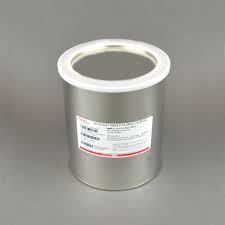 |
Loctite Stycast 5954 from Henkel is a two-part silicone liquid that cures with heat and has a high thermal conductivity. |
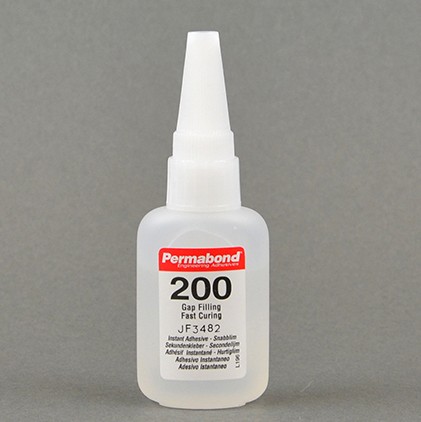 |
Permabond 200 is a single-part cyanoacrylate liquid that cures with moisture and has high viscosity with good flow control. |
Tech Specs
Here are some of the technical specifications for dielectric pottants and encapsulants like Dow Sylgard 184 Silicone Elastomer.
|
Type |
Spec |
Definition |
|
Cure |
Viscosity (cPs)
|
A measure of a fluid’s resistance to flow |
|
Material Resistance |
Ozone Resistance
|
The ability of a material to resist the deteriorating effects of ozone exposure |
|
Conductivity |
Dissipation Factor |
A measure of loss-rate of energy (mechanical, electrical or electromechanical) of a mode of oscillation in a dissipative system |
Resources
Here are some additional resources about dielectric pottants and encapsulants.
- Potting and Encapsulation in the Electronics Industry
- Encapsulation of Microelectronics Assemblies for use in Harsh Environments
- Thermally Conductive Potting Compounds Enable Higher Power Density Electronics
Epoxy Pottants and Encapsulants
Epoxy pottants and encapsulants provide excellent moisture resistance, high-temperature resistance, and chemical resistance. They also have higher rigidity and greater tensile strength than potting and encapsulating materials that use polyurethane or silicone chemistries. With their strong dielectric properties, epoxy products can be used in high-voltage applications. Cured epoxies can be brittle, however, and brittle solids can fail because of shock-induced fracture. Epoxies are also relatively slow to cure, and temperature cycling can affect performance properties.
Applications
Applications for epoxy potting and encapsulating materials include:
- Oil and gas sensors
- Ruggedized LED drivers
- Underwater transmitters
Products
These are some of the products you'll find on Gluespec.
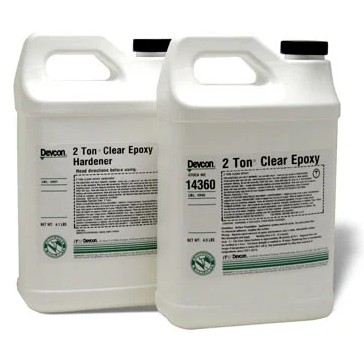 |
2 Ton Epoxy from Devcon (ITW) is a two-part liquid epoxy that is extremely strong and water-resistant. |
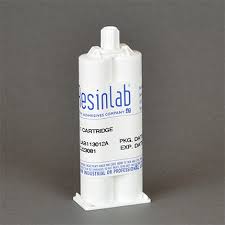 |
EP1121 Black from Resinlab is a two-part liquid epoxy that cures completely at room temperature to a tough yet soft polymer. |
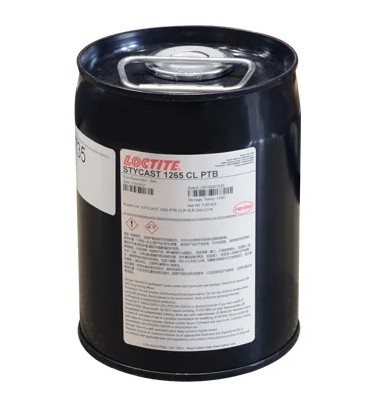 |
Loctite Stycast 1265 from Henkel is a two-part liquid epoxy that cures with heat and provides excellent adhesion. |
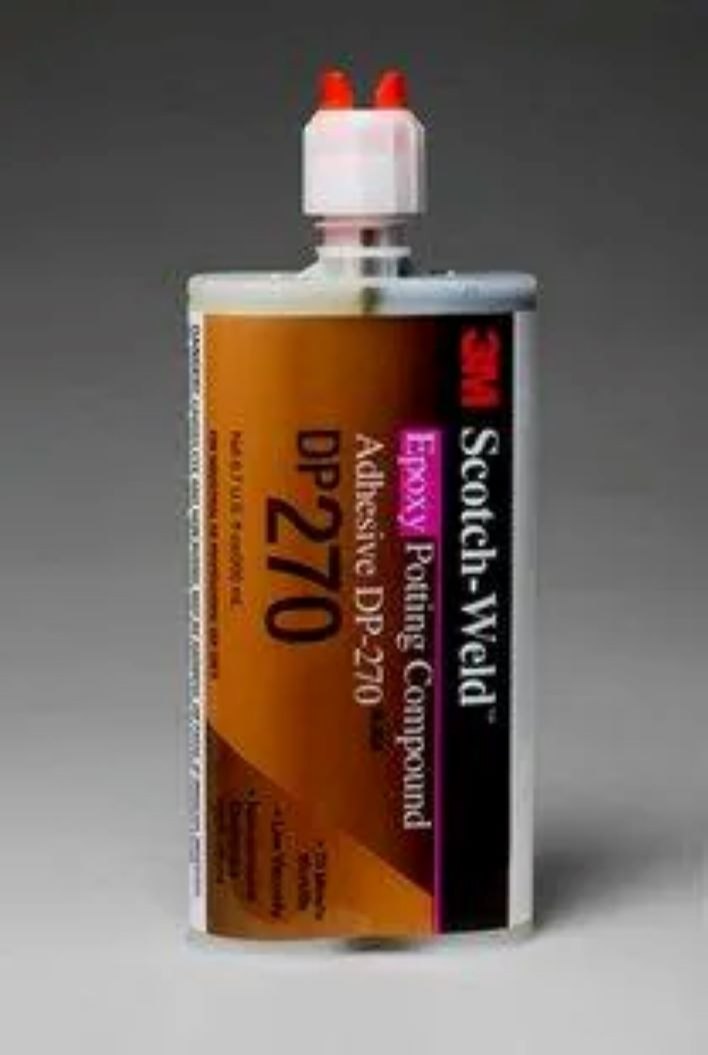 |
DP270 from 3M is a two-part liquid epoxy that provides good thermal shock resistance. |
Tech Specs
Here are some of the technical specifications for epoxy pottants and encapsulants like Devcon (ITW) 2 Ton Epoxy.
|
Type |
Spec |
Definition |
|
Cure |
Work/Pot Time (min)
|
Pot life is the length of time in which multiple part coatings or paints can be applied to a surface |
|
Bond Strength |
Compressive Strength (Psi) |
The maximum compressive stress that, under a gradually applied load, a given solid material can sustain without fracture |
|
Hardness |
Elongation % |
The process of becoming or making something become longer, and often thinner |
Resources
Here are some additional resources about epoxy pottants and encapsulants.
- Choosing the Right Potting Material: Epoxy, Polyurethane, Silicone Potting
- Benefits of Epoxy Potting Compounds
- Effects of Temperature Cycling on Epoxy Resins
Micro-Encapsulants
Micro-encapsulants include two main types of products: glob top materials and encapsulants, and underfills. Glob tops are used to encapsulate a single chip in chip-on-board (COB) applications. They provide greater protection than conformal coatings and are often used with wire-bonded chips and dies. Underfills are micro-encapsulants for chip scale package (CSP) and ball grid array (BGA), two popular types of integrated circuit (IC) packaging. Underfill materials use capillary action to fill and seal spaces during the secondary mounting of packaged chips to motherboards.
Applications
Applications for micro-encapsulants include
- Array devices
- Flip chip devices
- Radar and guidance systems
Products
Products
These are some of the products you'll find on Gluespec.
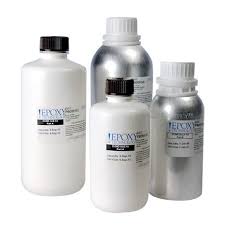 |
Epo-Tek H70E-2 is a two-part, thermally conductive epoxy paste that is designed for glob-top chip protection. |
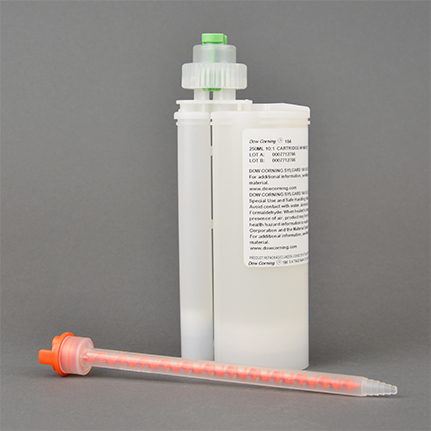 |
Loctite Eccobond COB 011-3A FF from Henkel is a liquid epoxy that penetrates fine pitch wires and narrow gaps. |
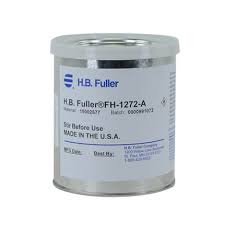 |
FH8008 from H.B. Fuller is a single-component, heat-curable epoxy underfill that flows quickly and fills the gap under the chip. |
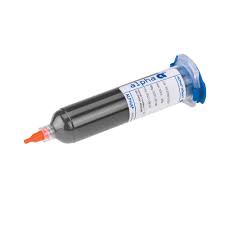 |
Hitech CU31-2030 from Alpha Metals is a one-part capillary underfill with fast, efficient flow properties. |
Tech Specs
Here are some of the technical specifications for micro-encapsulants like Hernon® Tuffbond 326.
|
Type |
Spec |
Definition |
|
Cure |
Cure Temperature (°F)
|
The temperature at which the material cures |
|
Bond Strength |
Shear Strength (psi) |
The ability of a material to resist forces that cause the material’s internal structure to slide against itself |
|
Hardness |
Durability |
The ability of a physical product to remain functional, without requiring excessive maintenance or repair, when faced with the challenges of normal operation over its design lifetime. |
Resources
Here are some additional resources about micro-encapsulants.
Polyurethane Pottants and Encapsulants
Polyurethane pottants and encapsulants have a flexible, rubbery consistency after curing that makes them a good choice for protecting delicate components. They can be formulated to have a wide range of physical properties and generally have greater resistance to shock and cracking than epoxies. Compared to silicones, polyurethanes have moderately greater tensile strength and significantly greater abrasion resistance. Because polyurethanes can adhere to a wide variety of electronic substrates, including plastics and composites, they form strong bonds to pots and PCBAs.
Applications
Applications for polyurethane pottants and encapsulants include:
- LED lighting
- Epoxy glass laminates
- Underwater transducers
Products
These are some of the products you'll find on Gluespec.
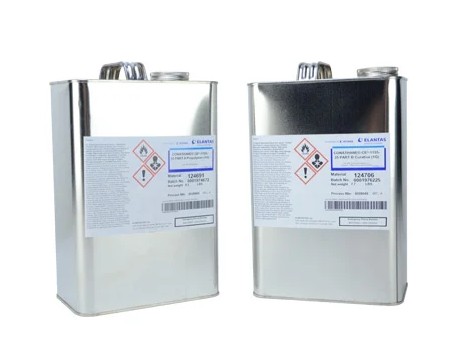 |
Conathane EN-1554 from Elantas is a two-part liquid polyurethane that cures at room temperature and has good resistance to oils. |
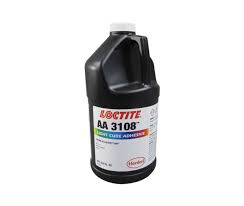 |
Loctite AA 3108 from Henkel is a one-part liquid polyurethane that cures with UV light and is very flexible and resilient. |
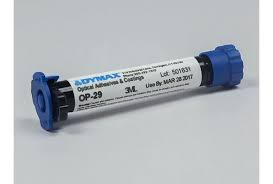 |
OP-29 from Dymax is a one-part liquid acrylated urethane that cures with UV/visible light. It is solvent-free. |
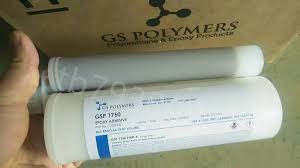 |
GS Polymer GSP 1603-3 is a two-part polyurethane potting compound that cures at room temperature and provides between one to two hours of working time. |
Tech Specs
Here are some of the technical specifications for polyurethane pottants and encapsulants like Henkel Loctite UK U-05FL.
|
Type |
Spec |
Definition |
|
Bond Strength |
Peel Strength (piw) |
A measure of the adhesive strength of two or more materials that have been bonded together. |
|
Hardness |
Flexibility |
The ability to bend easily or without breaking. |
|
Other Properties |
Flash Point (°F) |
The lowest temperature at which vapors above a volatile combustible substance ignite in air when exposed to flame. |
Resources
Here are some additional resources about polyurethane pottants and encapsulants.
- Polyurethane vs. Silicone Potting Compounds
- A Comprehensive Study of Polyurethane Potting Compounds
- Polyurethane Encapsulants Offer Enhanced Protection for LEDs
Silicone Pottants and Encapsulants
Silicone pottants and encapsuling materials are soft, flexible, and maintain their performance properties over a wide range of temperatures. Compared to epoxies, silicones can withstand higher temperatures and greater shock. They also provide better resistance to thermal cycling. Silicones can’t match epoxies in terms of strength, however, and silicones lack the abrasion resistance of polyurethanes. Often, silicone pottants and encapsulants are used in environments with high heat and high humidity. Products that contain thermally conductive fillers help move heat away from sensitive electronics.
Applications
Applications for silicone pottants and encapsulants include:
- Solar panels
- Automotive electronics
- Medical electronics
Products
These are some of the products you'll find on Gluespec.
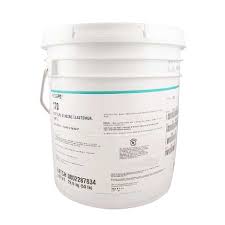 |
Sylgard 170 Fast Cure Silicone Elastomer is a two-part liquid silicone encapsulant with good flowability and flame resistance. |
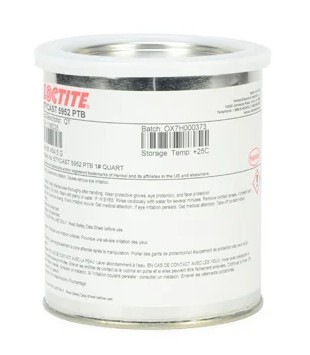 |
Loctite 5952 from Henkel is a two-part liquid silicone with good thermal conductivity and excellent electrical insulation properties. |
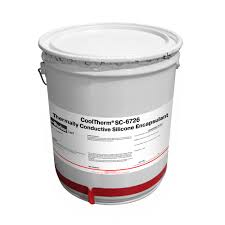 |
Cooltherm SC-6716 Silicone Resin from Parker Lord is a two-part product for densely packaged components. |
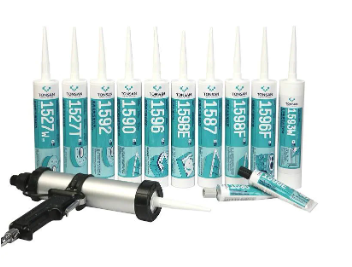 |
1581 from HB Fuller is a one-component alcohol cure RTV silicone sealant with excellent heat resistance. |
Tech Specs
Here are some of the technical specifications for silicone pottants and encapsulants like Resin Designs ThermoSink 35-1.
|
Type |
Spec |
Definition |
|
Cure |
Set Time (min)
|
The time it takes to form an acceptable bond when two or more substrates are combined with an adhesive |
|
Conductivity |
Volume Resistivity (O) |
Ratio of electrical resistance through a cross-section divided by length through which current flows. |
|
Other Properties |
Specific Gravity |
The ratio of the density of a substance to the density of some substance (such as pure water) taken as a standard when both densities are obtained by weighing in air. |
Resources
Here are some additional resources about silicone pottants and encapsulants.
- Silicone Encapsulating and Potting Materials
- Protective Silicone Potting & Encapsulation Materials
- Solving 5G Ecosystem Challenges with Silicones
UV/Visible Light Pottants and Encapsulants
UV/visible light pottants and encapsulants cure with ultraviolet (UV) light or visible light. Irradiation at a specific wavelength and energy intensity is required. To reach shadowed areas where UV light or visible light cannot penetrate, or light-based curing is otherwise incomplete, a secondary moisture cure may be required. UV/visible light pottants that fluoresce facilitate the inspection of bond lines. When exposed to low intensity blacklight, the fluorescing color provides significant contrast and high visibility against the substrates.
Applications
Applications for UV/visible pottants and encapsulants include:
- Sensors
- Chip modules
- Automotive lighting
Products
These are some of the products you'll find on Gluespec.
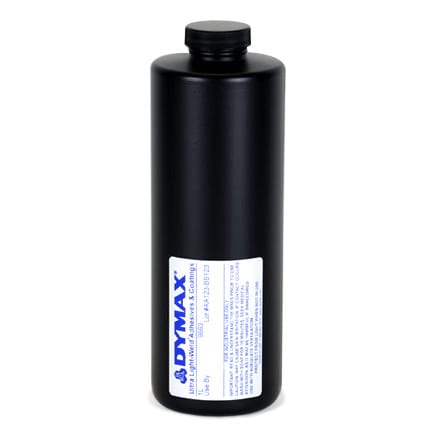 |
Multi-Cure 9-20558 from Dymax is a one-part liquid acrylic product that cures with UV/visible light and provide a thick moisture barrier. |
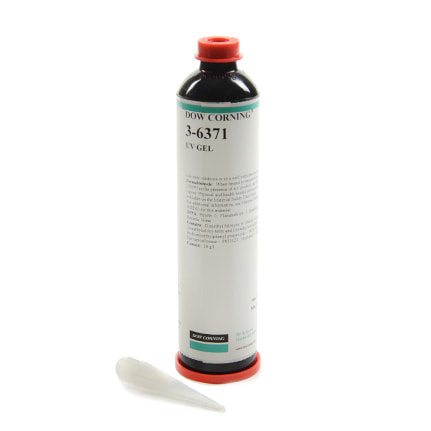 |
Dowsil 3-6371 UV Gel from Dow is a one-part silicone gel with a controlled volatility that cures with UV light. |
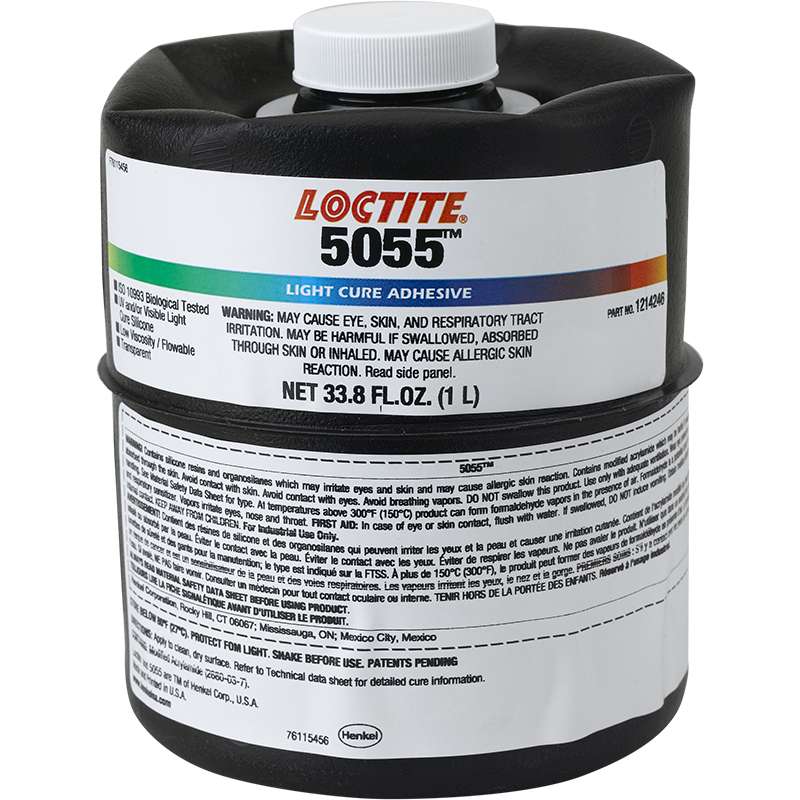 |
Loctite SI 5055 from Henkel is a one-component, UV/visible light curable silicone that resists autoclaving in medical applications. |
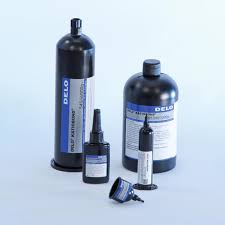 |
Delo Katiobond EG6133 is a one-part epoxy that cures with UV/visible light or with heat to a blue color. |
Tech Specs
Here are some of the technical specifications for UV/visible light cure pottants and encapsulants like Dymax Multi-Cure 9-20558.
|
Type |
Spec |
Definition |
|
Bond Strength |
General Bond Strength (psi) |
The amount of adhesion between the bonded substrates |
|
Conductivity |
Surface Resistivity (O) |
The resistance experienced by the leakage of current along the surface of the coat/insulating material |
|
Other Properties |
%Solids |
The percentage by weight of the nonvolatile matter in an adhesive |
Resources
Here are some additional resources about UV/visible light cure pottants and encapsulants.
- UV Light Cure Adhesive Q&A
- Is a UV Curable Adhesive or Coating the Right Choice?
- What Technologies Make Adhesives Fluoresce under UV?
Masking Materials
Masking materials are applied to functional areas of a PCBA that should not be coated with a pottant or encapsulant. They include reusable masking shields and disposable tapes. PCB masking tapes include low-ESD materials that resist electrostatic discharge (ESD) and are therefore less likely to damage PCB components. Polyimide masking tapes are generally less expensive than low-ESD tapes and can be die cut into specific shapes. Crepe masking tapes are constructed with a heavy, thick, crepe paper backing and, like polyimide tapes, can resist elevated temperatures.
Applications
Applications for masking materials include:
- SMD Pads
- Unsealed relays
- Connectors
Products
These are some of the products you'll find on Gluespec.
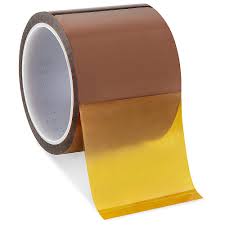 |
5413 from 3M is a tape that consists of a Kapton polyimide film and silicone adhesive. It is designed for high-temperature applications. |
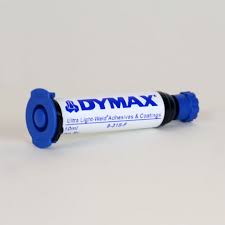 |
Ultra-Fast 9-20515 from Dymax is a one-part solvent-free gel that cures with UV/visible light to a red color. |
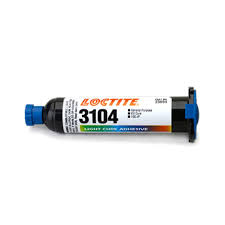 |
XCE-3104MT from Henkel is a one-part stencil paste that provides a lead-free alternative to solder for surface-mounted devices. |
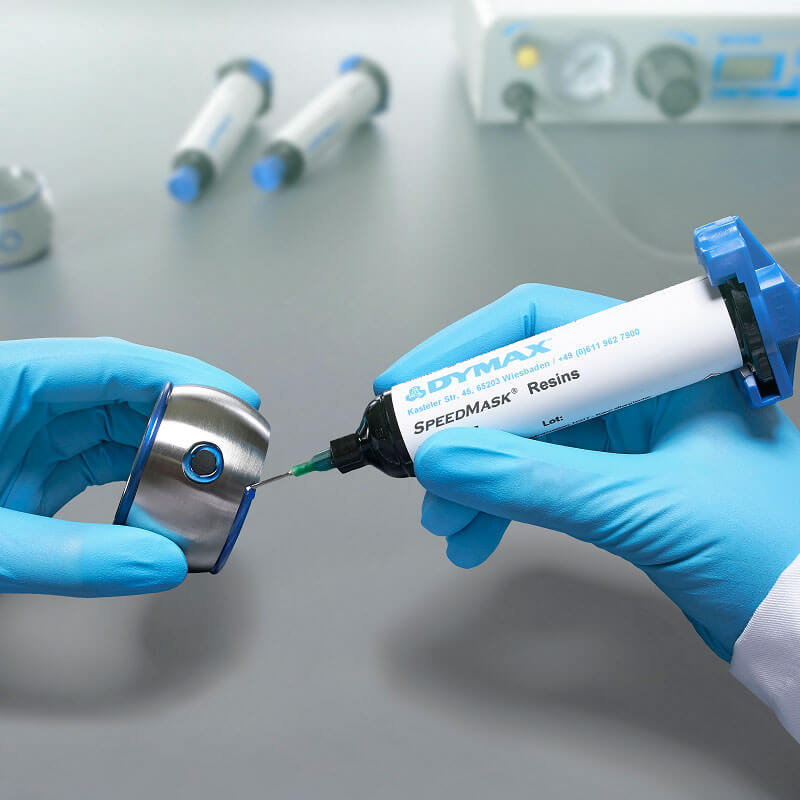 |
SpeedMask 708-SR from Dymax is medium viscosity gel that cures with UV light to a high-visibility red color. |
Tech Specs
Here are some of the technical specifications for masking materials like 3M Scotch Performance Masking Tape 233+.
|
Type |
Spec |
Definition |
|
Cure Specs |
Application Temperature (°F) |
The temperature at the point that the adhesive/tape is applied |
|
Bond Strength |
General Bond Strength (psi) |
The amount of adhesion between the bonded substrates usually measured in pounds per square inch |
|
Hardness |
Elongation% |
The process of becoming or making something become longer, and often thinner |
Resources
Here are some additional resources about masking materials.
- Masking PCBs: How and Why It’s Done
- How to Mask Printed Circuit Boards
- Tape Solutions for PCB Masking
Optically Clear Pottants and Encapsulants
Optically clear pottants and encapsulants have optical properties that include optical transparency, high transmittance, low haze, and minimal yellowing. Unlike opaque pottants and encapsulants, which can hide the contents of a PCBA from visual inspection, optically clear materials keep the electronic device in view. Optically clear pottants and encapsulants are available in various chemistries, but silicones are popular choice because of their thermal stability and high-temperature performance, properties that make them suitable for lighting and other applications.
Applications
Applications for optically clear pottants and encapsulants include:
- Image sensors
- Photo detectors
- LED displays
Products
These are some of the products you'll find on Gluespec.
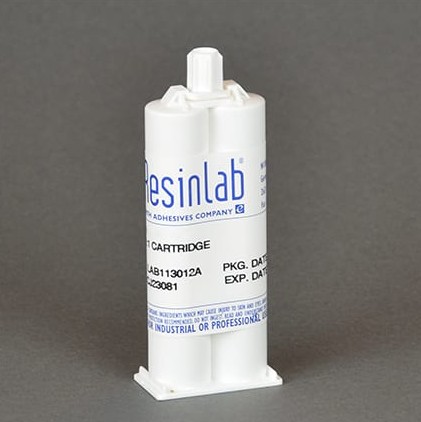 |
EP965SC7 from Resinlab is a two-part liquid epoxy that cures at room temperature to a tough, semi-rigid polymer |
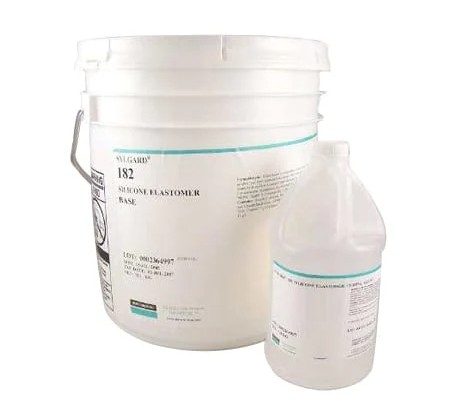 |
Sylgard 182 Silicone Elastomer from Dow is a two-part, heat-cured silicone that has a long pot life and cures to a flexible material. |
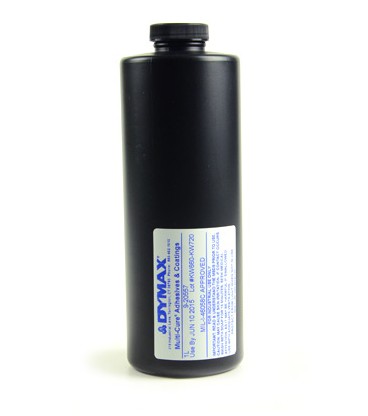 |
Multi-Cure 9-20558 from Dymax is a one-part, liquid acrylic that cures with UV/visible light for a thick moisture barrier. |
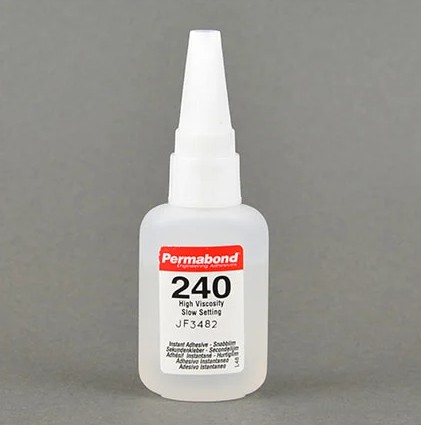 |
240 from Permabond is a one-part cyanoacrylate that cures with heat and is used with large gaps and porous substrates. |
Tech Specs
Here are some of the technical specifications for optically clear pottants and encapsulants like Permabond 200.
|
Type |
Spec |
Definition |
|
Cure Specs |
Thixotropic |
A thixotropic fluid is one that takes a fixed time to return to its equilibrium viscosity when subjected to abrupt changes in shear state |
|
Bond Strength |
Impact Strength (psi) |
The impact strength of a material is defined as its capability to resist a sudden applied load or force. |
|
Other Properties |
Specific Gravity |
The ratio of the density of a substance to the density of some substance (such as pure water) taken as a standard when both densities are obtained by weighing in air. |
Resources
Here are some additional resources about masking materials.
- Optically Clear Potting Compounds
- Advanced Silicone Materials for LED Lighting
- Comparative Properties of Optically Clear Epoxy Encapsulants
Gel Pottants and Encapsulants
Gel pottants and encapsulants cure in-place to form soft, resilient materials that provide cushioning against shock and vibration. Cured gels retain much of the stress relief provided by liquids while providing the dimensional stability of solid elastomers. To protect circuits and interconnects from mechanical and thermal stresses, gels are applied in thick layers. Products with excellent thermal stability and an extremely low modulus are used in systems that operate over wide temperature ranges and where stress-sensitive components are used. Some UV cured products fluoresce to support bond line inspection.
Applications
Applications for gel pottants and encapsulants include:
- Power modules
- Automotive PCBAs
- Solar cells
Products
These are some of the products you'll find on Gluespec.
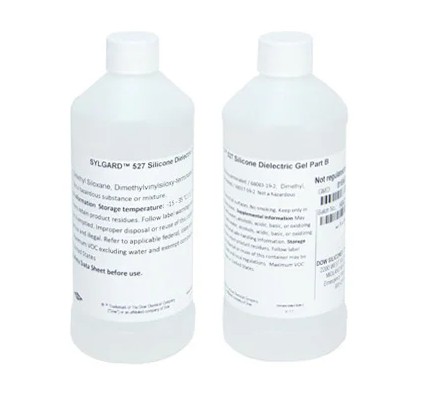 |
Sylgard 527 Silicone Dielectric Gel from Dow is a two-part, low viscosity product that cures at room temperature. |
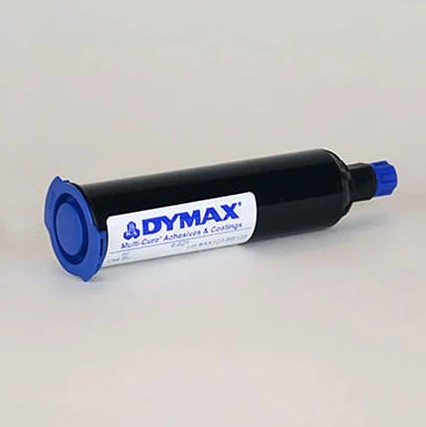 |
Multi-Cure 6-621-Gel from Dymax is a one-part gel that contains no reactive solvents and is in full compliance with RoHS. |
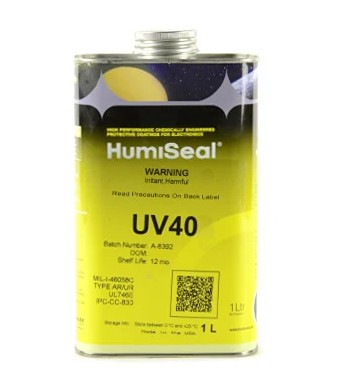 |
Humiseal UV20GEL is a one-part urethane acrylate gel that is used for staking and bonds well to engineered plastics. |
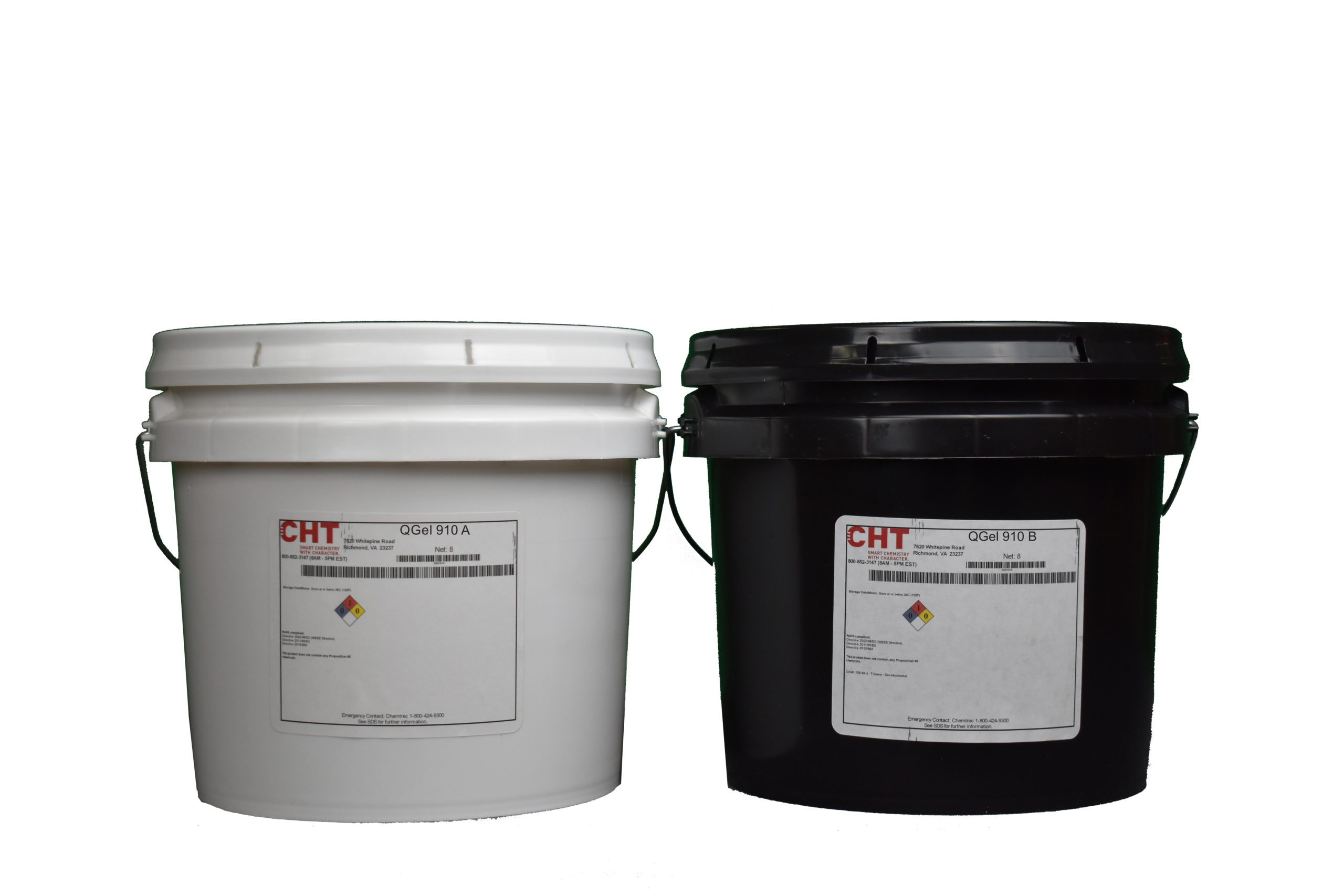 |
QGel 910 from CHGT is an addition-cure, moderately cross-linked silicone polymer that protects against shock and vibration. |
Tech Specs
Here are some of the technical specifications for gel pottants and encapsulants like HumiSeal UV20GEL.
|
Type |
Spec |
Definition |
|
Cure Specs |
Fluorescent |
A fluorescent surface, substance, or color has a very bright appearance when light is directed onto it, as if it is actually shining itself. |
|
Bond Strength |
Shear Strength (psi) |
The shear strength of a material is defined as its ability to resist forces that cause the material’s internal structure to slide against itself. |
|
Hardness |
Shore A Hardness |
The Shore A Hardness Scale is a method used to characterize how resistant materials are to localized deformation or indentation. |
Resources
Here are some additional resources about gel pottants and encapsulants.
- Dielectric Gels for Potting and Protecting PCB and Power Modules
- Dielectric Silicone Gel Potting Materials
- Module Encapsulation Materials, Processing and Testing
Primerless Pottants and Encapsulants
Primerless pottants and encapsulants eliminate the priming step that is typically required for proper adhesion. These products require clean surfaces but can help reduce operational costs by simplifying assembly and improving cycle times. Often, primerless pottants and encapsulants are designed for auto-dispensing and high-speed production. They are available in a variety of chemistries and, like other potting and encapsulating materials, absorb shock and vibration while resisting moisture and adhering to a variety of substrates.
Applications
Applications for primerless pottants and encapsulants include:
- Outdoor lighting
- Automotive PCBAs
- Solar cells
Products
These are some of the products you'll find on Gluespec.
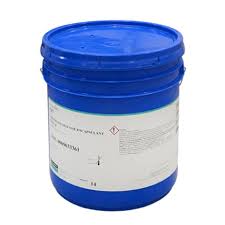 |
Sylgard 567 Primerless Silicone Encapsulant from Dow is a two-part heat-cured product with good flame resistance. |
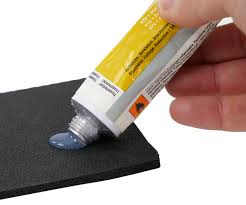 |
Elastosil N288 from Wacker is a two-part, liquid silicone that cures at room temperature and provides excellent primerless adhesion. |
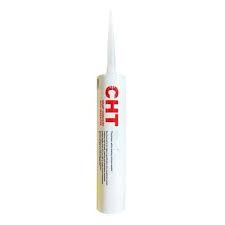 |
AS1723 from CHT is a one-part, liquid silicone that uses a non-corrosive, neutral alkoxy cure. |
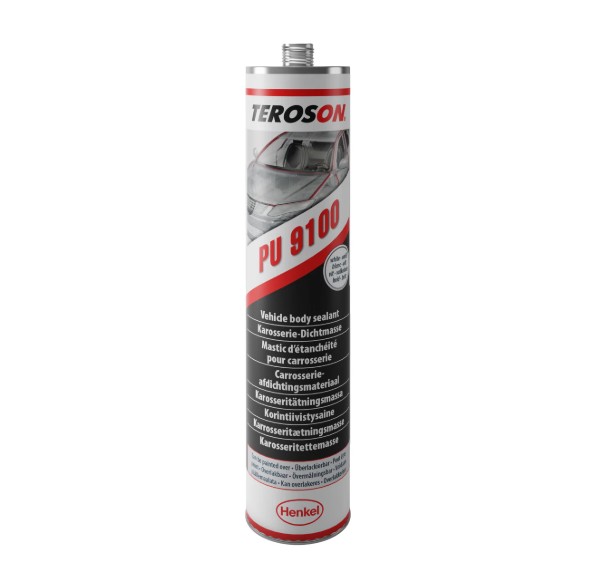 |
Teroson PU 8910 is a one-part liquid polyurethane adhesive that is free from solvents and PVC. |
Tech Specs
Here are some of the technical specifications for primerless pottants and encapsulants like Wacker Elastosil 288.
|
Type |
Spec |
Definition |
|
Cure Specs |
Tack Free Time |
Tack free time is when the surface of the adhesive ceases to be sticky, preventing the pickup of dirt or debris that could cause discoloration. |
|
Material Resistance |
High Temperature Resistance (°F) |
The adhesive’s ability to withstand prolonged exposure to high temperatures. |
|
Other Properties |
Density (g/cm3) |
Density is the mass of an object divide by its volume. |
Resources
Here are some additional resources about primerless pottants and encapsulants.
- Primerless Encapsulant for Outdoor Light Protection
- Potting & Encapsulation Materials
- Primerless Silicone Encapsulant
Shallow Potting
Shallow potting compounds are poured into pots to a reduced depth and have a shallower depth of cure than other potting and encapsulating materials. Because of their faster curing times, these materials support faster processing for great throughputs and lower processing costs. Shallow potting compounds are available in a variety of curing systems and chemistries, and some products can adhere to a wide variety of substrates. Shallow potting compounds that are formulated to cure primarily with UV/visible light may still require a secondary curing mechanism.
Applications
Applications for shallow potting compounds include:
- Antenna modules
- Avionics
- Consumer electronics
Products
These are some of the products you'll find on Gluespec.
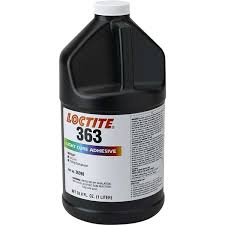 |
Loctite AA 363 from Henkel is a one-part, liquid acrylic product that cures with UV light and has a transparent yellow color. |
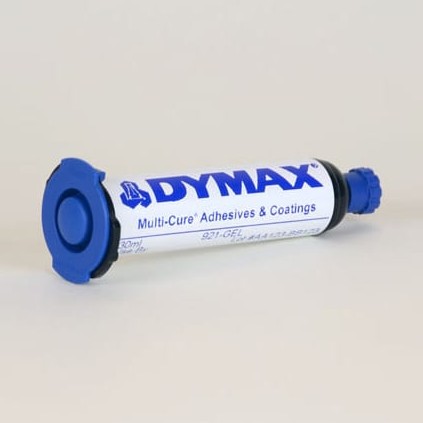 |
Multi-Cure 921-GEL from Dymax is a one-part, acrylated urethane product that cures with UV light or heat and has a translucent yellow color. |
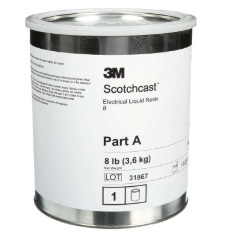 |
Scotchcast Electrical Insulating Resin 2104 from 3M is a two-part, polyurethane resin that cures at room temperature. |
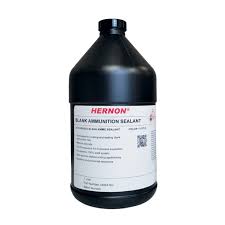 |
Blank Ammunition Sealant 53162 from Hernon is a UV and LED curable compound with good gap filling properties that has a clear-amber color. |
Tech Specs
Here are some of the technical specifications for get pottants and encapsulants like Hernon Ultrabond 758.
|
Type |
Spec |
Definition |
|
Cure Specs |
Fluorescent |
A fluorescent surface, substance, or color has a very bright appearance when light is directed onto it, as if it is actually shining itself. |
|
Bond Strength |
Shear Strength (psi) |
The shear strength of a material is defined as its ability to resist forces that cause the material’s internal structure to slide against itself. |
|
Hardness |
Shore A Hardness |
The Shore A Hardness Scale is a method used to characterize how resistant materials are to localized deformation or indentation. |
Resources
Here are some additional resources about gel pottants and encapsulants.
- Potting and Encapsulation in the Electronics Industry
- Potting Boxes: What to Consider When Potting Electronics
- Selecting the Right Potting Compound for Your Application
UL Pottants and Encapsulants
UL pottants and encapsulants meet requirements from Underwriters Laboratories (UL), which develops safety standards for materials used with PCBs. There are many UL standards, but two are especially important for potting and encapsulating materials. UL-746E comprises a series of tests for dielectric strength and flame retardance. UL 94 is used to measure the burn rate of a horizontal or vertical specimen of a specific thickness. There are five different UL 94 flame ratings that apply to pottants and encapsulants: HB, V-2, V-1, V-0, and 5-V.
Applications
Applications for UL conformal coatings include:
- Power supplies
- Industrial controls
- High voltage resistor packs
Products
These are some of the products you'll find on Gluespec.
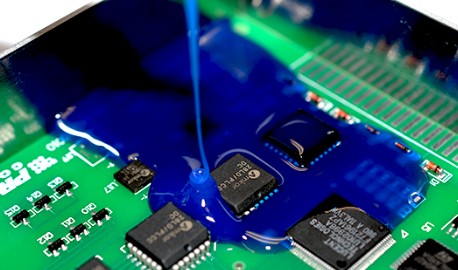 |
Thermosink 35-1 from Resin Designs is a two-part, liquid silicone that is thermally conductive and cures at room temperature. |
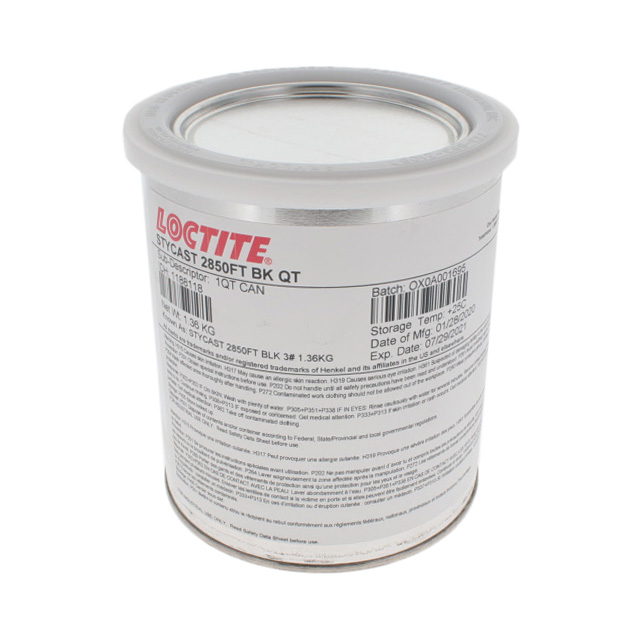 |
Loctite Stycast RE 2039 w/ HD 0242 from Henkel is a two-part, liquid epoxy that cures with heat and has excellent electrical properties. |
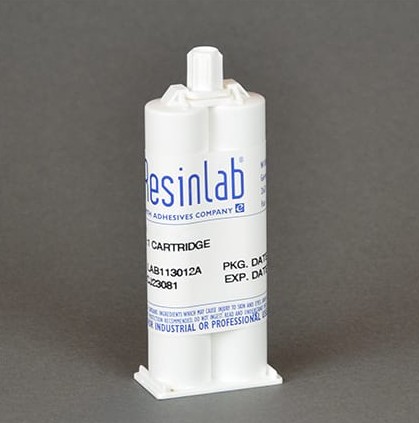 |
EP 1282 Black from Resinlab is a two-part epoxy encapsulant that has good wetting and adheres to most surfaces. |
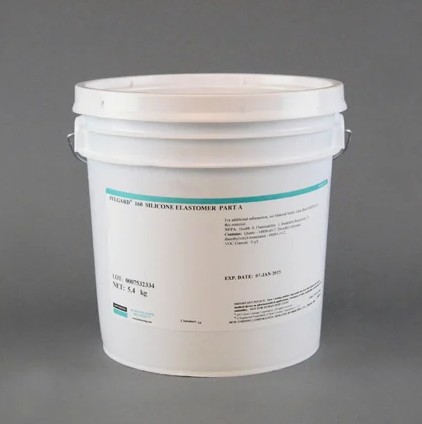 |
Sylgard 160 Silicone Elastomer from Dow is a two-part silicone elastomer that cures with heat and contains no solvents or cure byproducts. |
Tech Specs
Here are some of the technical specifications for get pottants and encapsulants like Resin Designs ThermoSink 35-1.
|
Type |
Spec |
Definition |
|
Cure Specs |
Set Time |
Set time is the time it takes to form an acceptable bond when two or more substrates are combined with an adhesive. |
|
Conductivity |
Dielectric Constant |
Dielectric constant is the ratio of an insulator’s capacitance to that of dry air. A dielectric constant of 10 means the insulator will absorb 10x more electrical energy than air. |
|
Thermal Conductivity (W/m°K) |
The ability of a material to conduct or transfer heat. |
Resources
Here are some additional resources about UL pottants and encapsulants.
- UL 94 Flammability Rating for Adhesives and Encapsulants
- Tech Talk: UL 94 Flammability Test for Potting Compounds
- UL Standards and Tests: Understanding the UL 746E Standard
Gluespec is Your Source for Potting and Encapsulating Materials
Gluespec’s comprehensive and quality-tested database of 35,000 adhesive materials includes the pottants and encapsulants that design engineers need. The materials and manufacturers in our database are not limited to specific suppliers, and data is quality-checked and updated as needed whenever new data sheets or product specifications are released.
If you need deep data on pottants and encapsulants or other materials, you’ll find what you’re looking for in our proprietary adhesives database. Along with technical data and key specifications, you’ll find best practices and comparable materials. Design engineers can also view test method information on dozens of material properties and data points.
Finally, Gluespec’s Advanced Search provides the tools you need to conduct deep filtering among all material properties. The result is a customized grid that contains materials and data points that are specific to your project. Save custom grids for quick access and share them, along with this Potting and Encapsulating Materials Guide, with your colleagues.

